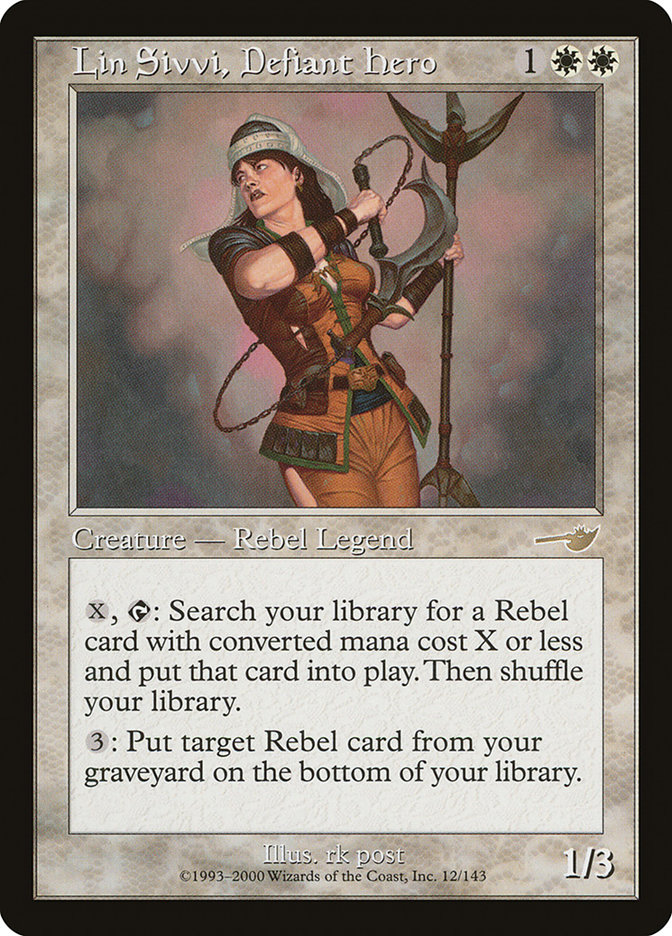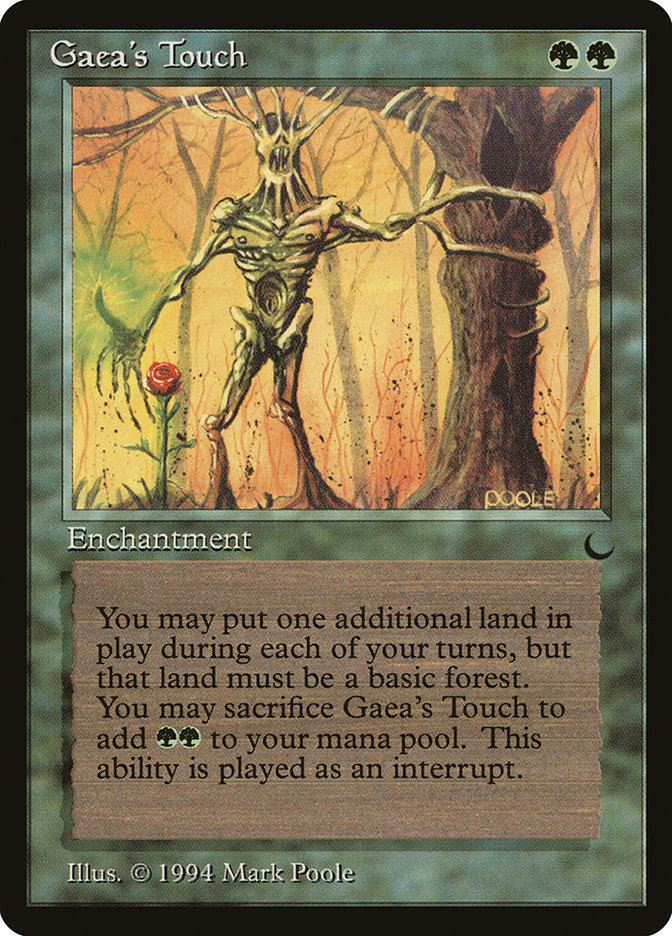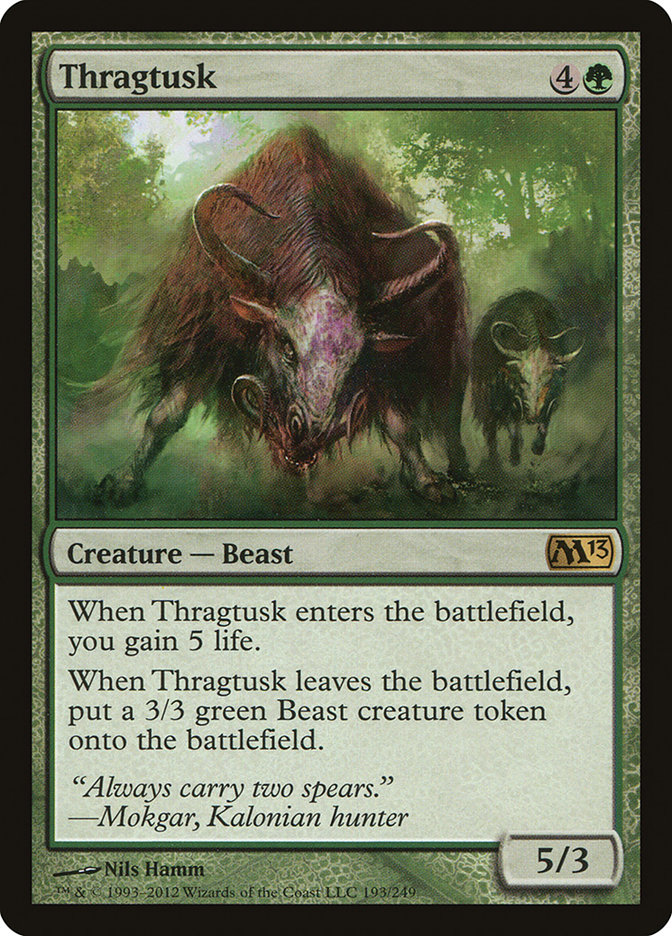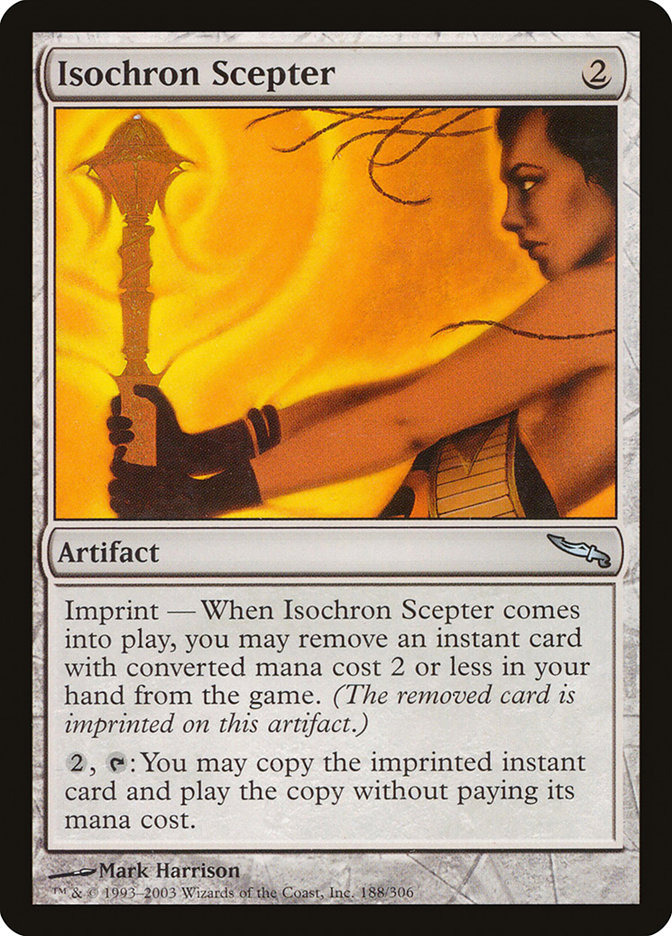Change is hard. I’m a creature of habit and routine. I still frequent (if I can use that word in this context) the same Mexican restaurant in Sacramento, California (Sal’s in West Sac) despite the fact that it is now three moves in my past. Basically, I eat there every time I visit my parents.
When the M14 rules changes were announced, there was a lot of buzz about them ruining Magic. In particular, people focused their energies on how hard the hexproof Geist of Saint Traft and Thrun, the Last Troll would be to deal with. When you think about it, the whole idea of using a clone as a legend killer is a little weird.
From a flavor standpoint, a clone wouldn’t kill someone; they would be perfectly matched and fight each other to a standstill. See Bill and Ted’s Bogus Journey for an example of this. From a game standpoint, Clone (and Vesuvan Doppelganger) preceded legends and their ability to clone kill didn’t come along until Champions of Kamigawa. Prior to that set, the first copy of a legend stuck for good, and subsequent copies would die under the argument that the original was the real one. Yeah. For those of you complaining about not being able to clone kill a Geist, just imagine if your Geists and Clones just plain died because they got their Geist out first. The Mercadian Masques Rebel mirror was usually won by the player who landed a Lin Sivvi, Defiant Hero first.
When evaluating the impact of a rules change of this magnitude, I have a one-year rule. Wait one year for a full block of cards to be printed before deciding if the change is positive or negative. Many people have speculated that Theros is a legendary-themed block, and if that’s the case, this rules change will certainly open the door for some new interactions that would not have been possible under the old rules. What if there is a clone with the additional ability “protection from cards with the same name”? Heck, on that note, isn’t Evil Twin suddenly much better?
Strionic Resonator, a.k.a. the Tuning Fork, a.k.a. Flux Capacitor, is the card that got the most rules hype going into the Prerelease. It probably isn’t going to see heavy sanctioned Constructed play, but it is sure to titillate Commander players in the same way that Rings of Brighthearth has. In fact, those two cards are like Bizarro twins of each other. One has a triggered ability that copies activated abilities, and the other has an activated ability that copies triggered abilities.
Whenever you talk about triggered abilities, it is important to understand what those are and how you identify them. At this time, there are three key words/phrases to look for to identify a trigger. When you’re ready, I’ll tell you what they are. They are “whenever,” “when,” and “at.” The last one is a little tricky in that it needs to be paired with a particular point in the turn like “at the beginning of your upkeep.” The difference between whenever and when comes down to whether the ability is generally expected to trigger just once or multiple times.
The rules for handling additional land drops has also changed, and again it is for the better. The rule used to be that you had to declare which land drop you were using. For example, you control an Oracle of Mul Daya, and it is revealing a land on the top of your library. When you play that land, you would have to declare if you were using your normal land drop or your additional Oracle land drop. This might be relevant if your opponent killed the Oracle before you made your second land drop for the turn. If you had used the Oracle land drop, you could still make your normal land drop, but if you used your normal land drop, you could no longer play a land after the Oracle died because you no longer had an additional drop.
Of course, very few people ever actually declared which land drop they were using because they weren’t aware that such a rule existed. Those who did declare it likely knew about the rules because they a) were a judge or b) had run afoul of said rule in a scenario like above. When such a snafu did occur, there wasn’t much that could be done about it in terms of judges fixing the situation. A choice had not been declared for the land drop, and the judge could either make them declare a choice right then and there retroactively or rewind to the point where the choice needed to be made. Essentially, the player would get a freebie to declare the correct land drop.
This might suggest that there should have just been a shortcut saying that the extra land drops are always used first. Simple enough—oops, until a player has extra land drops from multiple sources, like an Oracle of Mul Daya and an Explore. While it might be easy to make a policy that declares that extra drops happen first, having a policy to determine which of the two extra drops happens first would not have been clean.
Don’t even ask.
That was then. This is now, and the new rules for land drops is super simple to understand and to fix. Now the game evaluates how many land drops you have at any given point based on effects and abilities, and if you have played fewer lands than that, you can play a land. Let’s evaluate this with an example.
Under the old rules, if you had an Oracle of Mul Daya, played two lands, your Oracle died, then you played a second Oracle of Mul Daya, you could play a third land that turn because it was a new additional land drop. With the new rules, you cannot play a third land because at any given point in that sequence you only have two land drops available.
Another example: you have Azusa, Lost but Seeking and play three lands. Azusa dies, and you put it into your command zone. You recast Azusa. Under the old rules, you could play two more lands that turn because it was a new Azusa with new land drops available to you. New rules, this no longer works because at any given point you only have three total land drops available. Not only will this make these corner cases much easier to manage, but it makes it so you never have to worry about declaring which land drop you are using, an esoteric rule that never really did more than confuse people.
Speaking of confusing people, the most asked about card in M14 has to be Strionic Resonator. It mostly does what you think it should, but it’s worth going over a few scenarios to make sure we are on the same page. If you copy Thragtusk’s first trigger, you will gain ten life. If you copy Thragtusk’s second trigger, you will get two 3/3 Beasts. That’s straightforward enough.
Double your pleasure.
It is when paired with linked abilities that things get fuzzy for people. Let’s use Fiend Hunter as an example. Fiend Hunter has two triggers; the first exiles a creature, and the second returns that creature from exile. Those abilities are linked. Copies of triggered abilities will be linked to in the same way. This means that you can use Strionic Resonator to exile two creatures with Fiend Hunter. If Fiend Hunter leaves the battlefield, you will return both of the exiled creatures. Sorry. No permanent exile tricks here. If you exile one creature but decide to copy the return trigger, nothing happens. But I thought people might ask.
Speaking of permanent exile tricks, what is going on with Colossal Whale, Banisher Priest, and Tidebinder Mage? It has long been a rite of passage to know the Oblivion Ring trick (old timers like me know it as the Faceless Butcher trick—get off my lawn!) To recap briefly for those who have not passed the rite, if you respond to Oblivion Ring’s enter the battlefield trigger by removing it from the battlefield, the leaves the battlefield trigger will go off and resolve before the ETB trigger. That trigger will get very confused because it is linked and the first ability hasn’t exiled anything yet. End result, nothing happens. Then the ETB trigger resolves and exiles a permanent that will never return because the second trigger has already gone off.
Let’s be honest with each other. You’ve never seen anyone do the O-Ring trick in any meaningful match of Magic. I watch a disproportionate amount of Magic, and I’ve only seen it come up once with an Angel of Serenity. In contrast with that, I’ve seen that question asked dozens if not over a hundred times. The only other time this comes up is when an opponent makes a horrible misplay:
“I’ll Fiend Hunter your Bloodgift Demon.”
“In response, Brimstone Volley your Fiend Hunter.”
Ah, yes. The trap of doing things “in response,” a phrase that is so ubiquitous that it might as well be like [Valley Girl voice] “like,” you know? Getting caught up in that very familiar phrasing has “tricked” several a player into permanently exiling their own creature by mistake.
The move to Banisher Priest’s templating will simplify things at the cost of a trick that no one used and that mostly just served to confuse new players. It’s another case of “dumbing down the game” like taking away “damage on the stack” that will actually benefit us in the long run. And no, they did not errata those older cards to work like Banisher Priest and co. This is a rumor / question that has actually come up.
Coming back around to end on Strionic Resonator, I’ve got one more doozy of a combo with the other rules-intensive card in the set, Elite Arcanist. What exactly happens when you copy its enters the battlefield trigger? That’s the easy part. You get to exile two spells. You knew that. The hard part is what happens when you activate the ability. For starters, how much do you have to pay for X? Think about it for a moment while I distract you with this picture. Is X equal to one of the cards’ CMC, the other, both? (None?)
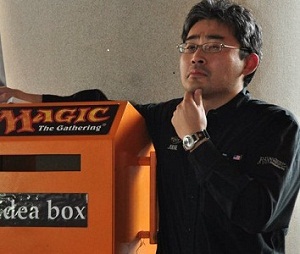
Don’t think too outside the box.
Since they are both cards exiled by Elite Arcanist, the linked ability sees both of them, and you will have to pay X equal to the CMC of both cards combined. Then you copy both cards and can cast none, one, or both cards. That’s a pretty fun interaction, but the fact that you have to pay the combined X makes it not such a great deal. If only there were a similar card that let you pay a fixed amount.
That’s the ticket. If you use Strionic Resonator on Isochron Scepter’s trigger, you can imprint two instants then copy both of them for two and tap. I’ll leave off with a challenge for you. What are the two best spells to combine in this way? I’ll accept “real answers” of actual cards that combo together as well as any joke or pun answers. Post in the comments below. You can also Tweet me your best double Isochron Scepter combo at:

